Top 10 Wood Species For fine Woodworking
- April 5, 2024
- 0 comment
Discover the Top 10 Wood Species For fine Woodworking . From the timeless elegance of Cherry to the robust character of Oak, discover the unique qualities, workability, and aesthetic appeal of each wood type. Whether you’re a seasoned woodworker or a beginner passionate about crafting, this guide is your gateway to selecting the perfect wood for your next masterpiece. Dive into the world of fine woodworking and let these exceptional wood species inspire your creativity and enhance your projects.
What is Woodworking?
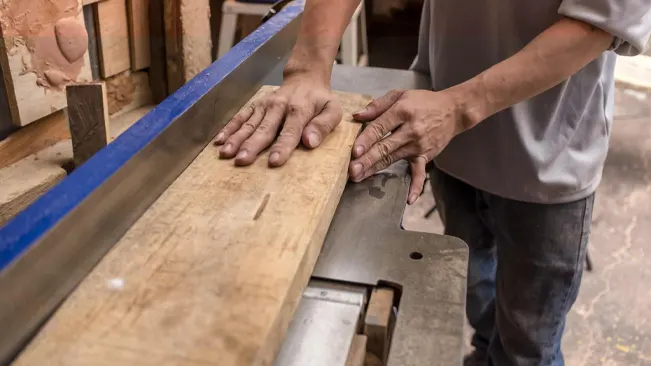
Woodworking is the craft of creating, building, or carving objects from wood. It encompasses a wide range of activities including carpentry, woodturning, joinery, and cabinet making, among others. Woodworkers use various tools and techniques to shape wood into furniture, decorative items, sculptures, and functional objects like bowls and utensils. This craft can range from simple handcrafted projects to intricate and highly detailed works. Woodworking is both an art and a trade, requiring skill, precision, and an understanding of wood properties and woodworking tools. It’s a timeless craft that has been practiced for thousands of years, evolving with technology but always retaining the fundamental principles of working with natural wood to create useful and beautiful items.
Top 10 Wood Species For fine Woodworking
Black Cherry Wood
Black Cherry Wood is not only appreciated for its aesthetics but also for the depth it brings to woodworking projects. The heartwood starts with a light pinkish hue that deepens to its characteristic rich reddish-brown with exposure to light, a trait that woodworkers value for adding character to their creations. This wood’s smooth texture and even grain make it a pleasure to work with, allowing for intricate joinery and fine finishes that highlight its natural beauty. Additionally, Black Cherry’s moderate hardness ensures durability while still being gentle on tools, making it a balanced choice for both functional and decorative items.
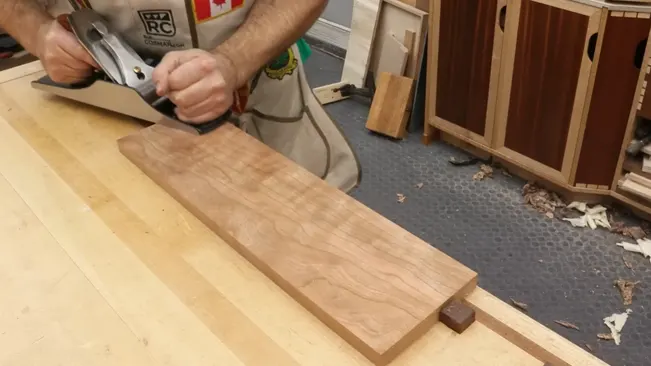
Beyond its physical properties, Black Cherry Wood holds a special place in the tradition of American furniture making, often associated with classic and sophisticated pieces. Its compatibility with a wide range of finishes and its ability to gracefully age make it a timeless choice for heirloom furniture. The wood’s subtle grain and warm tones invite a welcoming atmosphere in any space, making it a popular choice for cabinetry, paneling, and flooring, where the essence of warmth and elegance is desired.
Holly Wood
Holly Wood stands out in the woodworking world for its strikingly pure white color and fine, even grain, providing a natural canvas ideal for contrasting designs and detailed work. This rarity in the wood’s coloration makes it highly sought after for inlays and marquetry, where its ability to pair with darker woods creates stunning visual contrasts. The smooth texture of Holly allows for intricate carving and precision work, making it a favorite among craftsmen for specialized projects where detail and precision are paramount.

The use of Holly extends beyond aesthetic appeal to functional applications, such as in the crafting of piano and organ keys, where its dense and stable nature ensures longevity and resilience to wear. Despite its hardness, Holly remains workable, allowing artisans to shape it into delicate pieces without compromising its structural integrity. This unique combination of features secures Holly Wood’s position as a treasured material in fine woodworking, reserved for projects where its exceptional qualities can truly shine.
Cocobolo Wood
Cocobolo is a tropical hardwood that captivates with its dramatic grain patterns and bold color variations, ranging from deep reds to rich browns, often within a single piece. This visual complexity adds depth and character to woodworking projects, making Cocobolo a prized choice for artistic pieces where the wood’s natural beauty is the centerpiece. The high oil content not only contributes to its luster but also enhances its resistance to moisture, making Cocobolo an excellent choice for objects that require durability in varying environments, such as handles and outdoor furniture.
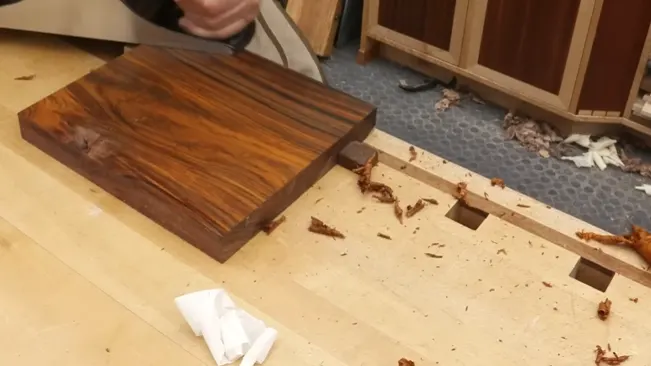
The allure of Cocobolo extends to its sensory attributes; the wood has a distinctive pleasant scent when worked, which adds to the overall experience of crafting with this material. However, its density and oiliness can pose challenges in gluing and finishing, requiring experienced handling and specific techniques to fully harness its potential. Despite these challenges, the unique appeal and enduring qualities of Cocobolo Wood make it a coveted material for fine woodworking projects that seek to marry aesthetic brilliance with functional resilience.
Brazilian Tulip Wood
Brazilian Tulip Wood is a true spectacle in the woodworking world, with its striking stripes and vibrant colors that range from bright yellows to deep pinks. This exotic hardwood is highly valued for its visual impact and the way it can transform a simple piece into a stunning work of art. Its fine grain and high density not only contribute to its luxurious feel but also allow for a polished finish that highlights its natural brilliance. Tulip Wood’s rarity and distinct coloration make it a material of choice for specialty items and accent pieces where its dramatic appearance can take center stage.

The use of Tulip Wood often signifies opulence and exclusivity, commonly found in bespoke furniture, ornate inlays, and decorative boxes. Its ability to pair well with more subdued woods allows for dynamic and visually captivating compositions, making it a favorite among artisans who seek to push the boundaries of design and craftsmanship. Despite its limited availability and high cost, Brazilian Tulip Wood remains a sought-after material for projects that aim to embody the pinnacle of beauty and luxury in woodworking.
Shedua Wood
Shedua Wood, with its inviting warm tones and pronounced grain patterns, brings a natural richness to woodworking projects. Also known as Ovangkol, this wood is celebrated for its versatility, blending the visual appeal of exotic hardwoods with the workability of more traditional woods. This balance makes Shedua an excellent choice for a wide array of projects, from furniture that seeks to make a statement to musical instruments that require both aesthetic and acoustic qualities. The wood’s durability and stability under changing environmental conditions make it a practical choice for pieces intended for everyday use.
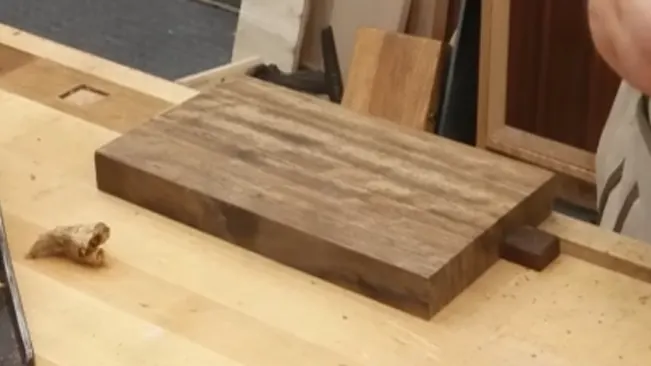
Shedua’s ability to take finishes well allows woodworkers to enhance its natural color variation and grain, adding depth and character to the final piece. The wood’s adaptability in terms of both aesthetics and functionality has led to its growing popularity in contemporary design, where its unique blend of beauty and resilience can be fully utilized. Whether used as the primary material or as an accent in combination with other woods, Shedua Wood offers a unique opportunity to enrich woodworking projects with its distinctive charm and practical qualities.
Vera Wood
Vera Wood, known for its stunning green to deep brown color transition, offers an unparalleled natural palette that can infuse projects with a burst of color and uniqueness. This South American hardwood is not only sought after for its vibrant hues but also for its exceptional hardness and resistance to wear, making it an ideal material for items that require durability in addition to aesthetic appeal, such as fine jewelry, luxury accessories, and decorative pieces. The wood’s density and natural oils contribute to its lustrous finish, enhancing the depth of its color and making it a standout choice for high-end woodworking projects.

The allure of Vera Wood extends beyond its visual properties to its lasting nature; the wood’s color tends to darken over time, adding a layer of depth and history to crafted pieces. This transformative quality, combined with its natural durability, makes Vera Wood a symbol of timelessness in woodworking. Crafting with Vera Wood requires expertise, as its hardness can pose challenges, but the resulting pieces are often extraordinary, showcasing the wood’s vibrant colors and making a bold statement in any setting.
Walnut Varieties
The Walnut family, encompassing varieties such as Black, English, and Claro, offers a wide spectrum of colors and grain patterns, making it a versatile and popular choice among woodworkers. Each variety brings its unique characteristics to the table, from the deep, chocolate tones of Black Walnut to the lighter, more intricate patterns of English and Claro Walnut. This diversity allows for creative flexibility, enabling artisans to choose the perfect Walnut variant to match the aesthetic and functional requirements of their projects. Walnut is not only cherished for its visual appeal but also for its workability and durability, making it suitable for a broad range of applications, from fine furniture and cabinetry to detailed carvings and gunstocks.
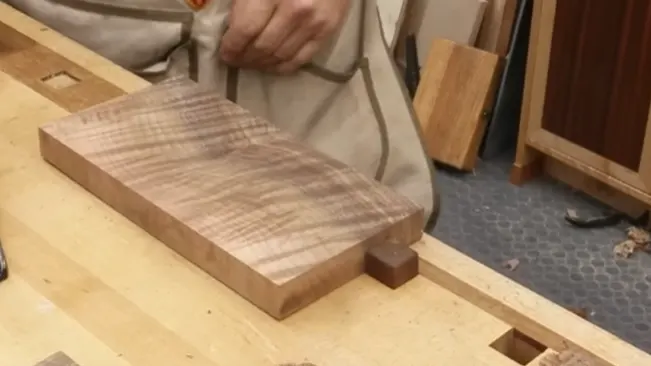
The adaptability of Walnut extends to its compatibility with various finishes, which can enhance or subtly alter its natural color and grain, allowing for further customization of the final piece. The wood’s ability to provide both strength and beauty makes it a favorite for heirloom pieces that are intended to last for generations. Whether used in large expanses or as accent details, the Walnut varieties offer woodworkers the opportunity to infuse their projects with natural elegance and timeless appeal, making it a cornerstone material in the world of fine woodworking.
Maple Wood
Maple, in its many forms, from the hardy Hard Maple to the more pliant Soft Maple, stands as a testament to versatility and durability in the woodworking domain. Its inherent strength and resilience make it an ideal candidate for high-traffic items like flooring and furniture, while the unique patterns found in Birdseye and Curly Maple provide stunning visual effects for decorative pieces. Maple’s light color and subtle grain offer a neutral canvas that can be easily customized with stains and finishes, catering to a wide range of design preferences. This adaptability makes Maple a go-to wood for both traditional and contemporary projects, where its reliability and aesthetic flexibility are highly valued.

The appeal of Maple extends to its consistent quality and availability, making it a dependable choice for large-scale projects and commercial applications. The wood’s ability to withstand wear and maintain its appearance over time contributes to its popularity in both functional and artistic woodworking. From the smooth, uniform surface of Hard Maple to the intriguing textures of its figured varieties, Maple wood offers endless possibilities for creativity and craftsmanship, solidifying its place as a favored material in the woodworking community.
Northern White Pine
Northern White Pine, with its soft, workable nature, presents a world of opportunity for woodworkers who favor a more hands-on, tool-friendly approach. Its ease of use makes it particularly appealing for intricate carvings and detailed work, where the craftsman’s skill can truly shine. The wood’s light color and subtle grain patterns provide a versatile backdrop for a variety of finishes, allowing for a wide range of stylistic expressions. Northern White Pine is often associated with rustic and country-style designs, where its natural charm and warmth can be fully appreciated in cozy, casual settings.
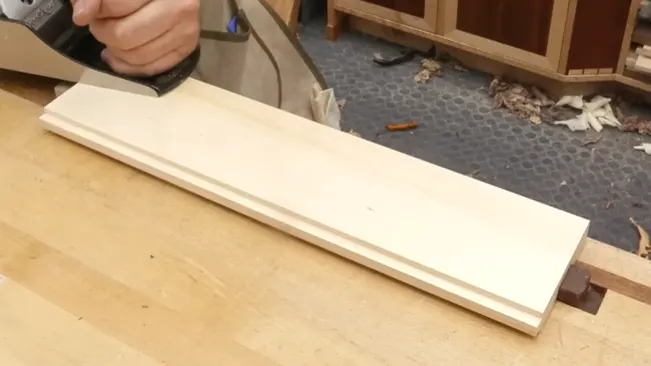
Despite its softer nature, Northern White Pine is valued for its stability and uniformity, making it a reliable choice for larger panels and construction elements where consistency is key. Its affordability and sustainability also make it an attractive option for eco-conscious projects and those on a tighter budget. Whether used in the construction of quaint cottage interiors or in crafting quaint, hand-painted furniture, Northern White Pine offers a blend of practicality and aesthetic appeal that endears it to woodworkers and designers alike, celebrating the beauty and versatility of natural wood in everyday life.
The Woodworker’s Tools: Essential Tools for Working with Fine Woods
- Chisels: These are essential for detailed work such as carving and shaping joints. A good set of sharp, high-quality chisels can make all the difference in achieving clean cuts and fine details.
- Hand Saws: Different types of hand saws, including dovetail saws, coping saws, and tenon saws, are vital for making precise cuts, especially where power saws can’t reach or might be too aggressive.
- Planes: Hand planes, including block planes, smoothing planes, and jointer planes, are used to smooth and flatten wood surfaces, refine edges, and shape wood precisely. They are crucial for achieving a flawless finish on your workpiece.
- Clamps: A variety of clamps, such as bar clamps, C-clamps, and corner clamps, are indispensable for holding pieces together while glue dries or for securing your workpiece while you work on it.
- Workbench: A sturdy workbench is the foundation of any woodworking shop. It should be stable and capable of handling various clamping and securing tasks, providing a reliable surface for intricate work.
- Measuring and Marking Tools: Precision in woodworking starts with accurate measuring and marking. Tools like rulers, tape measures, squares, marking gauges, and scribes are essential for ensuring your cuts and joints align perfectly.
- Router: A router is an incredibly versatile tool that can be used for a multitude of tasks including cutting grooves, hollowing out wood, and creating intricate patterns or edges.
- Drills and Bits: A reliable power drill and a comprehensive set of drill bits are necessary for drilling holes for dowels, hardware, or joinery. Specialty bits can also be used for decorative effects.
- Sharpening Tools: Keeping your tools sharp is crucial for fine woodworking. Whetstones, honing guides, and strops are used to maintain the sharp edges on chisels, planes, and other cutting tools.
- Dust Collection System: Fine woodworking often generates a lot of dust. A good dust collection system or at least a high-quality dust mask is essential for keeping your workspace clean and your lungs healthy.
- Jigsaw: For cutting curves and complex shapes in wood, a jigsaw is unparalleled. It allows for a great deal of creativity in your projects.
- Scroll Saw: For extremely intricate cuts and detailed work, especially in thinner wood pieces, a scroll saw is essential. It allows for precision and creativity in decorative projects.
- Wood Lathe: For turning wood and creating symmetrical, round items like legs, spindles, and bowls, a wood lathe is a must-have. It opens up a whole new dimension of woodworking projects.
Conclusion
In conclusion, the realm of fine woodworking is enriched by the diverse characteristics and unique qualities of various wood species. From the enduring strength of Oak to the delicate beauty of Maple, each wood type offers something special to both novice and seasoned woodworkers. The top 10 wood species, including Cherry, Walnut, Mahogany, Teak, and others, are prized not only for their aesthetic appeal and workability but also for their ability to transform woodworking projects into true works of art. Whether crafting heirloom furniture, intricate carvings, or durable outdoor pieces, selecting the right wood species is paramount to achieving desired results. As we’ve explored these remarkable woods, it’s clear that the choice of material can significantly influence the craftsmanship, functionality, and longevity of any piece. By understanding and appreciating the unique properties of these top wood species, woodworkers can continue to push the boundaries of creativity and excellence in the art of fine woodworking.
FAQs
- What makes a wood species “fine” for woodworking?
A “fine” wood species for woodworking is typically characterized by its durability, workability, grain patterns, and aesthetic appeal. These woods are often used in high-quality furniture, cabinetry, and decorative items. - Why is hardwood often preferred for fine woodworking projects?
Hardwoods are preferred due to their strength, density, and variety of grain patterns and colors, which make them ideal for durable and visually appealing woodworking projects. - Can softwoods be used for fine woodworking?
Yes, softwoods can be used for fine woodworking, especially in projects where a lighter weight wood is desired, or for specific design aesthetics. Softwoods like Cedar and Pine are often used for their unique textures and ease of manipulation. - How do I choose the right wood species for my project?
Consider the project’s intended use, desired aesthetic, the wood’s durability, workability, and your budget. Research and sometimes even consulting with experts can help in making the right choice. - How does the grain pattern affect a woodworking project?
The grain pattern can significantly affect a project’s appearance and how it’s worked on. Straight grains are generally easier to work with, while more intricate patterns, like those found in Burl or Birdseye Maple, offer unique aesthetic appeals but can be more challenging to work. - What are some considerations for working with exotic wood species?
When working with exotic woods, consider their availability, cost, and any special working characteristics, such as hardness or tendency to splinter. Also, be aware of environmental and ethical sourcing considerations. - How important is wood moisture content in fine woodworking?
Wood moisture content is crucial in woodworking, as it affects the wood’s movement, stability, and susceptibility to warping or cracking. Properly seasoned or kiln-dried wood is essential for fine woodworking to ensure the longevity and quality of the finished piece. - Are there any sustainable practices in fine woodworking?
Yes, sustainable practices include using locally sourced woods, opting for certified sustainably harvested woods, reusing or repurposing wood, and minimizing waste by optimizing cuts and designs. - How does one finish a fine woodworking project to enhance the wood’s natural beauty?
Choosing the right finish (oil, varnish, lacquer, etc.) depends on the wood type, intended use of the piece, and desired aesthetic. Proper sanding, application, and finishing techniques are crucial to highlight the wood’s natural beauty. - Can I mix different wood species in a single project?
Mixing wood species can add contrast and visual interest to a project. However, it’s important to consider how different woods will work together in terms of color, grain, and expansion/contraction rates.

Joel Cunningham
Forestry AuthorI'm Joel Cunningham, an expert in pruning and weed management with over a decade of experience. My skills are rooted in formal training and extensive practice, focusing on advanced pruning techniques and efficient weed control. I'm known for my quality work, precision, and deep understanding of plant health and soil dynamics. My contributions extend to educational initiatives where I share sustainable practices and advice, establishing myself as a reliable and authoritative figure in the gardening community.












Leave your comment